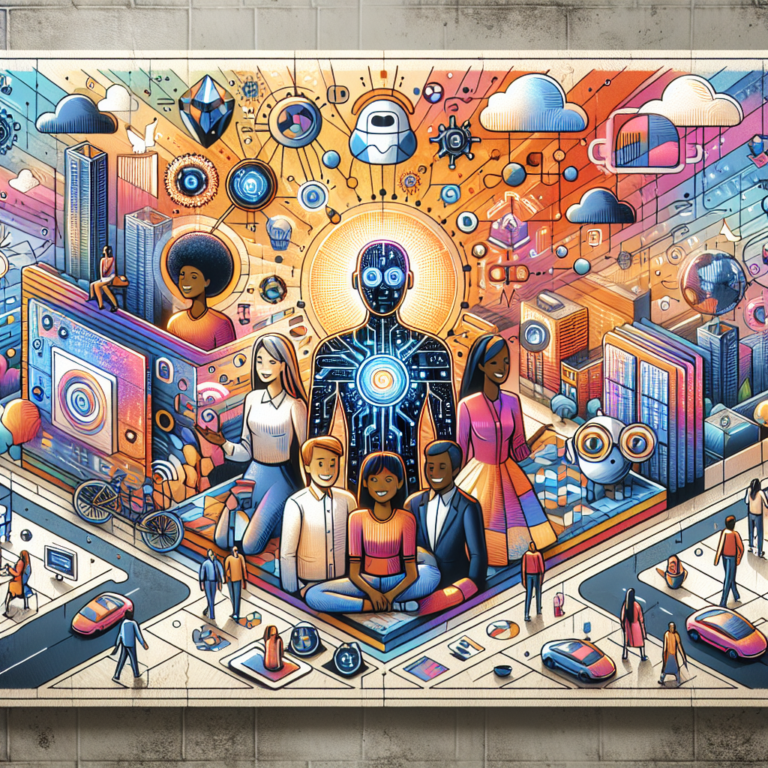Unlocking the Future: Context-Aware AI Agents by 2025
In the upcoming year of 2025, the landscape of technology will undergo a significant transformation. Instead of just acting as sophisticated tools, major tech companies will introduce us to extraordinary capabilities through context-aware AI agents. This change will create a seamless blend of technology and our everyday lives, turning tools into life-enhancing abilities.
Traditional tools, such as vehicles, smartphones, and computers, help to overcome individual barriers, while abilities feel inherent and instinctively available to us. Just as language and math enhance our cognitive functions, allowing us to engage and innovate, these new capabilities will redefine our relationship with technology. Unlike basic skills, which we don’t pay for, these advanced capabilities will come at a price.
The emerging realm of technology centered around context-aware AI agents will form part of a broader movement referred to as augmented mentality. This advancement will emerge from the harmonious blend of AI, conversational computing, and augmented reality (AR) technologies. By 2025, fierce competition will ignite among leading tech firms, all eager to deliver these remarkable new superpowers to consumers.
The Essential Role of Context-Aware AI Agents
Central to this technological evolution will be context-aware AI agents, designed to be integrated into wearable devices, particularly AI-powered glasses. These intelligent agents will accompany us throughout our daily lives, observing our surroundings and enriching our understanding of the world around us. By 2030, it is projected that a substantial portion of the population will depend on these intelligent assistants to elevate their daily experiences.
Envisioning Our Future with AI
Interaction with these context-aware AI agents will begin with simple whispers, as they will respond like an ever-present friend, offering personalized advice and recommendations. For instance, suppose you stroll through a busy street and spot a shop. Today, you would retrieve your phone to search for its opening hours. However, with these innovative agents, the experience will become far more efficient.
- Stage 1: Imagine sporting AI-enabled glasses that comprehend your environment. Instead of reaching for your phone, a simple whisper, like “What time does the store open?” prompts an immediate response: “10:30 AM.” This seamless interaction feels more like using an inherent ability than relying on a device.
This new way of interacting is profound, as the AI agent will share your perspective. It won’t just know where you are; it will understand your focus and provide context-specific insights.
- Stage 2: By2030, the communication will evolve even further. Instead of whispering, you may only need to mouth the words, enabling the AI to read your lips and interpret your silent inquiries. This method will provide an even deeper sense of intimacy.
- Stage 3: By 2035, we may reach a point where you won’t need to mouth the words at all. The AI could interpret your silent thoughts, so simply thinking about asking a question prompts a helpful response through the ear. You could gaze at an object and simply think about what you wish to discover, and the information would arrive instantaneously.
Transforming Everyday Interactions
These AI agents will not only answer basic queries but will also anticipate your needs. For instance, if a colleague approaches and you struggle to remember their name, the AI will pick up on your hesitation and remind you, “It’s Gregg from engineering.” During shopping trips, if you wonder about the nutritional value or price of a product, the information will flow to you effortlessly.
These abilities will extend beyond providing factual responses. The AI will also enhance your emotional intelligence, helping you gauge the emotions of those around you. It will guide you in real-time dialogues, making your interactions more intuitive and fulfilling.
Market Innovations and Influences
This rapid technological evolution is not mere speculation. Powerhouses like Meta and Google are at the forefront of developing these innovative tools. Meta’s advancements include integrating context-aware AI in their Ray-Ban glasses and launching the Orion mixed reality prototype. With extensive investments in AI and augmented reality, they are on track to lead the mobile computing market.
On a similar note, Google has recently announced its Android XR, a groundbreaking AI-driven operating system crafted for immersive experiences. This system strives for seamless integration with our daily lives, thus making Google’s tools even more significant in the enhancement of human capabilities.
Understanding Risks and Responsibilities
As we embrace these cutting-edge technologies, we must also consider their potential risks. The saying “with great power comes great responsibility” resonates particularly in this context. The key responsibility falls on the companies that design these technologies, along with the regulatory bodies tasked with overseeing their implementation.
Imagine wearing AR glasses capable of modifying your perception based on external programming. While the intentions may be positive, the chance of manipulation remains—delivering a warning for companies to create ethical guidelines and prioritize consumer welfare.
- Promote transparent business practices that emphasize user engagement rather than merely focusing on passive content consumption.
- Encourage subscription services that deliver meaningful superpowers instead of taking advantage of consumer visibility.
As we step further into this era of innovation, the challenge lies in ensuring these newfound capabilities are woven into our lives responsibly. If handled correctly, the opportunities for advancement are monumental; however, the need for proper oversight is equally critical to avoid future dilemmas. The rise of context-aware AI agents promises a redefined interaction with technology and opens up a world of possibilities, transforming our lives for the better.




0 Comments